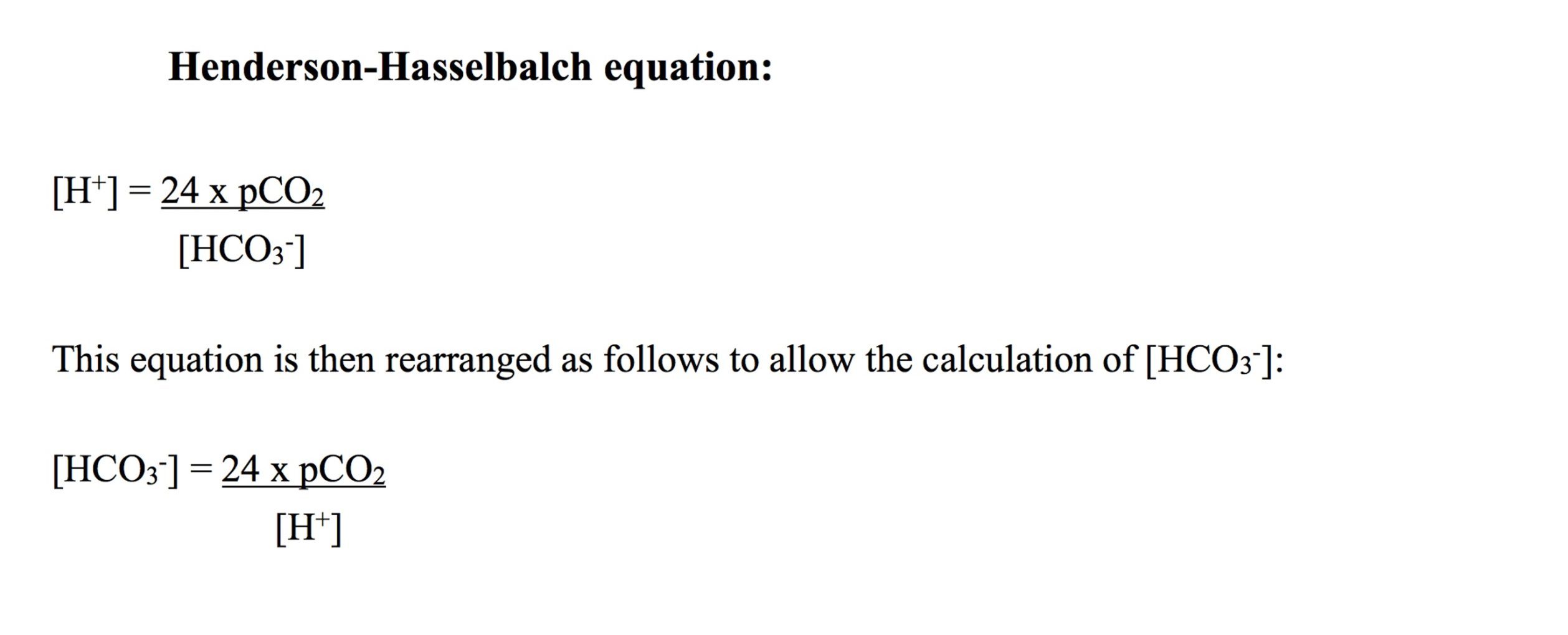Measurement of Acid-Base Balance
Blood pH, pO2, pCO2, and HCO3–
[H+] (reported as pH, which is the negative log of H+ concentration), pO2, and pCO2 are measured directly by specific electrodes within the blood gas analyzer. [H+] is the free H+ concentration in the blood, pO2 and pCO2 are the partial pressures of oxygen and carbon dioxide, respectively, dissolved in the blood. HCO3– is then calculated, using the measured pH and pCO2.

Base excess (BE)
Base excess is calculated to account for the combined bicarbonate and hemoglobin buffering capacity of blood. Another way to think of BE is that it indicates how much acid or base needs to be added to bring the pH back to normal. BE is derived mathematically from pH and pCO2 measurements. The RI of BE is a slight deviation around zero (e.g. 0 +/-3). A value >3 indicates metabolic alkalosis (excess base) and a value <-3 indicates metabolic acidosis. Base deficit is sometimes reported and is equivalent to a negative base excess.
Bicarbonate reported on biochemical panels
The HCO3– that is reported on many biochemical panels is measured using an enzymatic procedure on the chemistry analyzer. Serum is used for this procedure. RI vary slightly from those derived from blood gas analysis.
Amount of acid or base that needs to be added to bring the pH of blood back to normal.
Oxygen-carrying molecule within erythrocytes.

